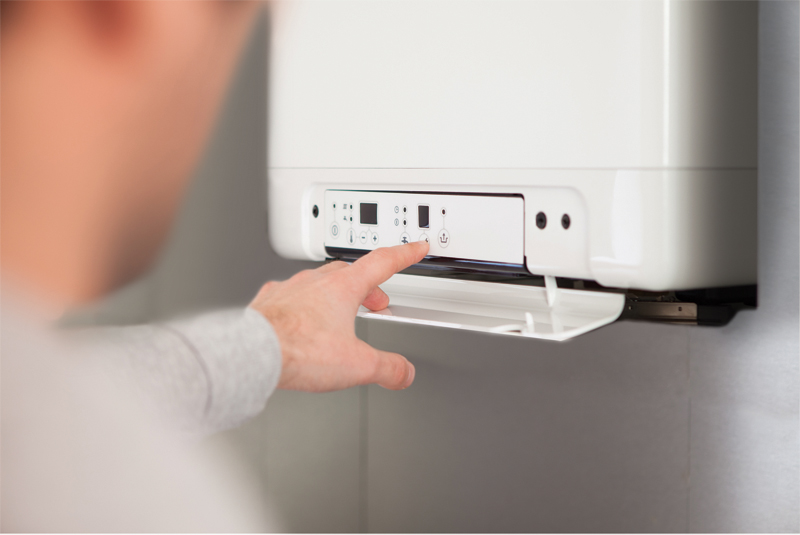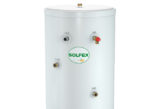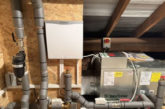
Despite the benefits of heat pump technology, especially for off grid properties, a key obstacle to uptake is often the homeowner’s lack of awareness of how the product works and its advantages. Iain Bevan from Daikin UK gives installers advice on selling in a heat pump solution and ensuring it works to optimum efficiency.
Heating a domestic property efficiently is one of the most important considerations for any homeowner, so it is somewhat surprising that alternatives to traditional gas central heating systems – many of which utilise renewable energy – are not more widely explored. There is a growing choice of systems that will deliver significant benefits to the homeowner.
In particular, for the 15% of UK homes that are off grid, seeking an alternative means of heating a property can reap significant returns. The most common heating options where mains gas connection is not possible – Liquid Petrolum Gas (LPG), oil and electric – can all prove expensive. For these properties, renewable energy heating technologies such as air source heat pumps can provide a solution.
Understanding the financials behind a heat pump installation is crucial to appreciating the long-term gain. Although the upfront cost of a heat pump is more when compared to a traditional boiler, there is funding available to incentivise their uptake.
Established in April 2014, the Government’s domestic Renewable Heat Incentive scheme (dRHI) allows homeowners to claim funding for choosing renewable heating technology. Eligible end users will receive quarterly payments for seven years based on the amount of renewable heat the system produces. To encourage further investment in renewable sources, in December 2016 the air source heat pump tariff was increased by 35.5% from 7.51 to 10.49 p/kWh.
Going forward, the initial investment can also be further offset by reduction in fuel costs when compared with oil, direct electric or LPG based heating systems.
When looking to design and install a heat pump system, it’s important to take into account the parameters within which it works – utilising the heat loss calculators and other estimator tools readily available from manufacturers.
An air source heat pump extracts latent heat from the outside air all year round, in temperatures as low as -25°C. It uses a compressor to turn low-pressure, low temperature liquid into high temperature, high-pressure gas. The heat generated is used to heat water for domestic hot water and heating.
Although heat pumps require electricity to function, the unit will generate as much as 3kW of energy for every 1kW used, providing low cost, low carbon energy.
When recommending a heating system for homeowners – whether for a new build or replacement – there are factors that must be considered to ensure the correct specification.
Establishing the heat load of the home in question and the level insulation is important as each heat pump option has an optimum running temperature. If the property is a new build, this information will be readily available. However, if the property is older, a heating survey may be necessary. Over or under-sizing a system can dramatically impact on the system’s energy consumption and efficiency. For properties with a high heat load, such as older, poorly insulated homes a high temperature heat pump would be required.
Furthermore, the source of the heat within the building – either underfloor heating or radiators – needs to be considered as this also impacts on the temperature the heat pump will need to operate at. Due to the low flow temperatures, underfloor heating is ideal for use with heat pumps. However, if radiators are the chosen emitter, the correct sizing of the radiators is essential to optimising the system’s performance.
Similarly, if the heat pump is being used for heating and hot water, ensuring that the size of the hot water cylinder is adequate for the needs of the household is important. Low temperature heat pumps – such as many monobloc options – will require a larger cylinder. While the water will still be hot, showers and baths will require a greater ratio of hot water to cold due to the relatively lower temperatures – around 65°C.
Space should also be considered as, although the unit itself usually doesn’t require a lot of room, adequate air flow is critical for the system to function correctly, so the positioning of the unit is key.
For homeowners who are still reluctant to completely switch to renewable energy, hybrid systems may provide the solution. Systems such as the Daikin Altherma Hybrid combine a traditional gas-condensing boiler with a heat pump to provide a best of both worlds solution that helps to save up to 35% more energy. This is due to its smart programming that automatically determines the most economically and energy efficient combination based on energy prices, outdoor temperatures and indoor heat capacity.
Finally, the customer’s ability to control their system in a way that best suits them is important. By selecting a system that has simple controls with scheduling and monitoring via smartphone apps will help ensure ease of use.
Homeowners are often put off by the prospect of new technology to replace their original heating system. However, for customers off the gas-grid in particular, it’s important to be able to inform them of the benefits of heat pumps and provide them with an energy efficient alternative.
For more information, visit www.daikin.co.uk.













